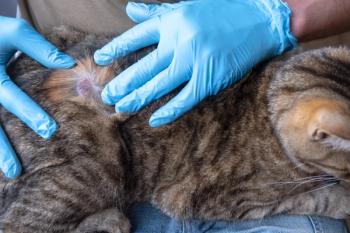
Sex in veterinary practice
The demographics in your community are important. So are the demographics of your veterinary associates.
When you're looking to buy a practice, you need to know more than "This seems like a nice area and there aren't too many practices nearby." Reality has a way of jumping up and biting you in the butt unless you really, really do your homework. In business the term for this is "due diligence."
Due diligence answers a lot of questions, the most important of which is, "How much revenue will a practice developed on this site bring in annually at maturity (usually after five years)?" Other vital questions include:
> What is the community income within a five- to 10-mile effective drawing area?
> Is this area growing or shrinking in population?
> How much total community income could be spent on veterinary medicine?
> Are the residents in this area seekers of high-quality veterinary medicine or just basic necessities?
> How much would an average client transaction be in this location five years in the future?
> What would be my practice's market share? How many full-time-equivalent veterinarians would I need to share this income with?
> Is there room within five to seven miles for other practices to open in the future?
> If practices moved in, how would they affect future earnings?
> How much will 2015 dollars buy in terms of 2011 dollars? What will be the break-even point in 2015? Will $500,000 or $1 million in revenue be enough, or will overhead be so oppressive that more than that will be needed just to stay afloat?
> Can I take home enough to maintain my desired lifestyle while practicing high-quality medicine?
The answers to these questions constitute a feasibility study. Most of the answers—if you pay enough to the right demographics research company—are available today before you sink your first dollar into building or leasing.
Associates vs. practice owners
The most difficult question in the list is, "How many full-time-equivalent veterinarians would I need to share this income with?"
Well, let's look at an example. If a community has a total income of, say, $2.3 billion, along with the per capita pet spending set to produce $7.7 million in veterinary spending, and there are 10 practices within eight miles of your location, does that not mean $770,000 in gross revenue for each veterinarian?
No. That estimate ignores these historical observations:
> Practice owners work 55 hours per week.
> Associates average 45 hours per week.
> Practice owners take an average of 10 vacation days per year.
> Associates take an average of 20 vacation days each year.
> Relief veterinarians average 3.5 workdays per week.
What then is a full-time-equivalent veterinarian? How many full-time-equivalent veterinarians will share the $7.7 million in that area?
Women vs. men
Just as you begin to grasp the enormity of those characteristics, along comes a new consideration: What is the ratio of male to female owners and associates?
Economists have shown that women 10 years into owning practices are likely to work six fewer hours per week than their male counterparts, and while both men and women love kids, women allow their children to influence their practice to a greater extent. Of these women, those without children work only 3 percent fewer hours than men, while those with children work 24 percent fewer hours.
Another variable in this great calculus of prediction is that the number of hours worked by married female veterinarians is inversely proportional to the earnings of their spouses. With family financial security comes the ability to make a professional career an option more than a necessity.
It is ironic in that many of our best and brightest women become professionals to earn higher wages but wind up marrying the best and brightest men, who also earn high wages, affording their wives the option of not having to work!
Was the women's investment in their veterinary education well spent? The National Bureau of Economic Research postulates that these women would not likely have met these men without their professional education.
In determining earnings, there are many more factors to consider, not the least of which is the conclusion of pilot studies in sexual discrimination that more men are motivated by money than women. I know that the letters to the editor columns will be burning up next month, but you can read the New York Times-bestselling Super Freakonomics for detailed sources.
In 40 years of my personal analysis of hundreds of practices where I turned declining practices into high achievers, I did so through detailed analysis of associate and owner behaviors. There's no question that the average transactions of female associates, in general, average 8.6 percent lower than those of their male counterparts. This is true whether the associate is paid on flat salary or percentage of production, although it is true that the difference is more noticeable on percentage compensation. Further, cases of discounting are significantly greater among female veterinarians.
Yes, when determining how the dollars of veterinary medicine in any community are distributed in any given practice, the sex of the owner and associate have to be taken into consideration. But I also strongly believe that there are opportunities for every veterinary professional, male or female, provided they use their talents to communicate to pet owners how much more they benefit their beloved pets if they use dentistry and nutrition to extend the years of healthier companionship.
Dr. Snyder, a well-known consultant, publishes Veterinary Productivity, a newsletter for practice productivity. He can be reached at 112 Harmon Cove Towers Secaucus, NJ 07094; (800) 292-7995;
Newsletter
From exam room tips to practice management insights, get trusted veterinary news delivered straight to your inbox—subscribe to dvm360.




